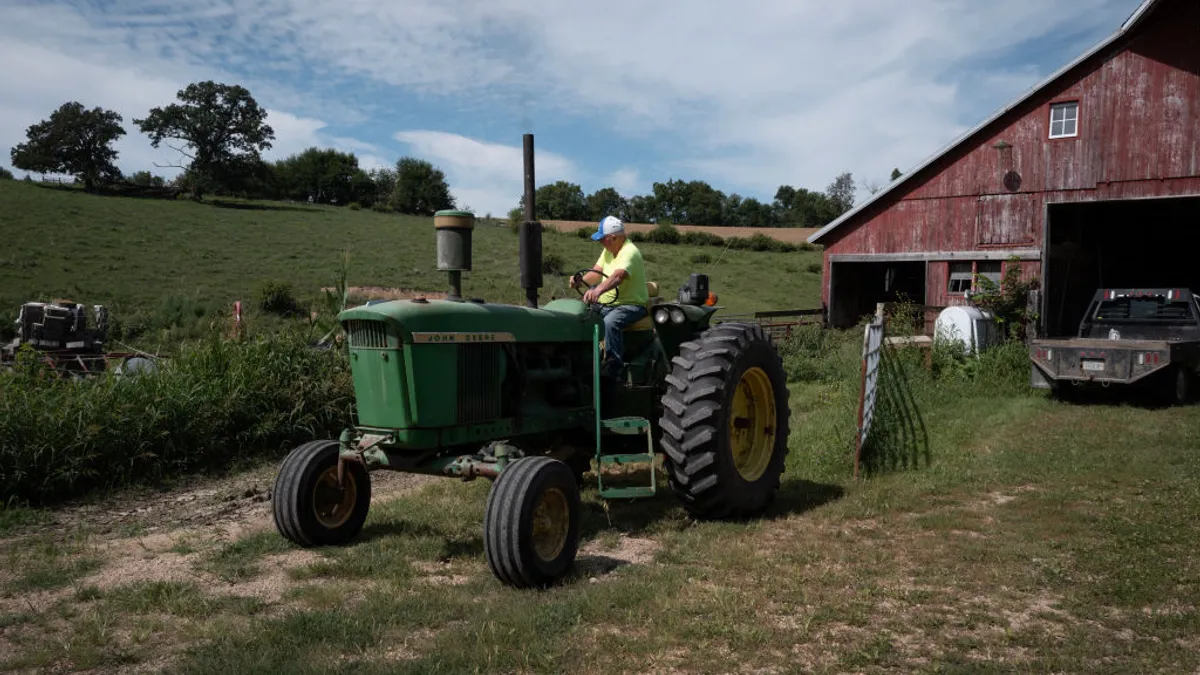U.S. farm income is predicted to decline far less than expected in 2024, with a government forecast no longer anticipating what would have been the largest profit decline in close to two decades.
Farm income is expected to decrease 4.4% to $140 billion with escalating livestock and egg values boosting overall industry prospects, according to a U.S. Department of Agriculture forecast released on Thursday. In February, the USDA predicted close to a 26% decline in income, a record drop.
The rosier outlook reflects wild swings in cattle and egg prices, in addition to lower production costs. Fertilizer, feed, pesticide and transportation costs are all expected to drop after remaining stubbornly high for years following the start of the pandemic.
"Without question, despite a softening of input costs, returns to crop producers remain a challenge as we recover from shocks in the market," USDA Secretary Tom Vilsack said in a statement. "However, in other areas the report improves the difficult picture the last forecast painted in February."
Livestock values are expected to increase 7.1% to $267.4 billion in 2024, with eggs seeing the largest percentage increase. Egg prices paid to farmers are expected to rise close to a whopping 39% as avian influenza roils flocks across the U.S. and limits supply.
"We did not anticipate that egg prices were going to increase as much as they have," USDA senior economist Carrie Litkowski said in a discussion of the forecast Thursday.
Beyond eggs, rising prices are expected to boost the overall livestock industry with milk, cattle, hog and broiler chicken values all expected to rise. Only turkey prices are forecasted to fall on lower prices and supply.
The strength of the livestock sector comes as the USDA still predicts broad income declines for crops, with growers in the Midwest expected to see the largest drop as record crop production levels hurt global price prospects. Corn receipts are expected to fall 20% over last year, with soybean values forecasted to decrease nearly 15%.
"This sharp downturn in crop cash receipts, despite – or because of – a bumper crop, has been alarming to farmers who have been battling fluctuating commodity prices and rising input costs," Daniel Munch, an economist for the American Farm Bureau Federation, wrote in a blog post. "The revised 2024 forecast suggests an exceptionally tough year ahead for these producers."
In a potential bright spot for farmers, the revised outlook also highlights a decline in production costs, with prices for fertilizer, feed, pesticide and transportation all expected to fall around 10% over last year.
Still, reduced government payments, rising interest rates and higher labor costs are expected to provide more of a drag on earnings. Labor expenses are expected to rise nearly 7% as wages increase, and interest costs are forecasted to jump 6% with farmers taking on more debt.
Farm Bureau President Zippy Duvall said the forecast underscores the need for a new farm bill, including changes to the farm safety net.
"Congress has been kicking the can down the road when it comes to farm bill, but our farmers need help, and they need it now," he said.











